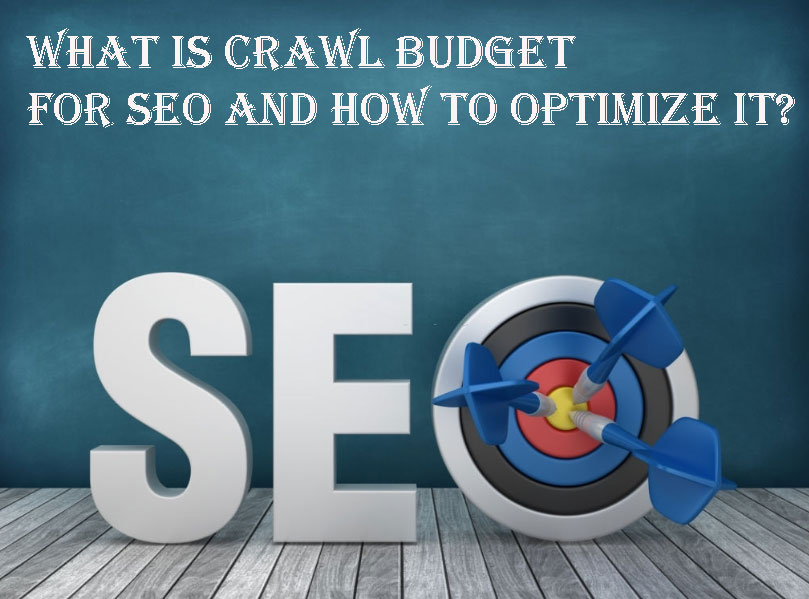


Crawl budget is an idea that is regularly misjudged and generally examined in SEO and computerized promoting networks and frameworks. The vast majority will, in general, imagine that it’s some supernatural thing you can use to Digital Marketing Course in Delhi your way up to Google’s top outcomes.
Notwithstanding all the substance expounded on how web indexes work by and large and the crawling cycle specifically and it seems like advertisers, and website admins are as yet confounded about crawl budget.
The Problem of SEO
There’s a prominent absence of comprehension about web crawlers’ essentials and how the hunting cycle functions. SEO management wonder makes disarray and ordinarily prompts what money managers call the “glossy item disorder” that essentially suggests that without a comprehension of the basics, advertisers are less fit for Digital Marketing Course in West Delhi; subsequently, they indiscriminately follow anybody’s recommendation.
The Solution of
Moreover, this article will show you the essentials of crawling and how to utilize them to distinguish whether “crawl budget” is something you should think about and something significant for your business/site.
Definitions
Before we dive further into the idea of crawl budget and its digital marketing course in Dwarka, it is critical to see how the crawling cycle functions and what does it mean for web indexes. As per Google, there are three fundamental advances the web index follows to produce results from pages:
- Crawling: Web Crawlers access freely accessible website pages
- Ordering: Google investigates the substance of each page and stores the data it finds.
- Serving (and Ranking): When a client types an inquiry, Google presents the most pertinent answers from its record.
- Without crawling, your substance won’t be filed lines; it won’t show up on Google.
The Specifics of the SEO and Crawling Process in content
The Google states on its documentation about crawling and ordering that:
“The crawling cycle starts with a rundown of web addresses, crawlers use joins on those destinations to find different digital marketing course in Dwarka. The product gives extraordinary consideration to new destinations, changes to existing locales and dead connections.
A Computer program figures out which destinations to crawl, how frequently and the number of pages to bring from each site.”
Be that as it may, how does Google ensure viable crawling?
It would be best if you started by organizing pages and assets. It will be practically outlandish and costly for Google to crawl every site page. Since we see how the crawl cycle functions, we should delve further into the aspects of crawl budget in your organization.
What is the definiton of Crawl Budget?
We a Crawl budget is the number of pages a crawler sets to crawl on a specific timeframe. When your account has been depleted, the web crawler will quit getting to your website’s substance and proceed onward to different locales. Crawl budgets are diverse for each site, and your site’s crawl budget is set up consequently by Google.
The web index utilizes a broad scope of components to decide how much funding is assigned to your website. As a rule, the are four principal factors Google uses to distribute crawl budget:
- Site Size: Bigger locales will require more crawl budget.
- Worker Setup: Your site’s exhibition and burden times may affect how much budget is designated for it.
- Updates Frequency: How frequently would you say you are refreshing your substance? Google will organize content that gets refreshed consistently.
- Connections: Internal connecting structure and slow connections.
While the facts demonstrate that crawl-related issues can keep Google from getting to your site’s most basic substance, comprehend that crawl recurrence is certifiably not a quality pointer. Getting your site crawled all the more frequently won’t assist you with positioning better as such.
If your substance isn’t up to your crowd’s guidelines, it won’t draw in new clients. This won’t change by getting Googlebot to crawl your site all the more regularly.
How Does Crawl Budget Work?
The more significant part of the data we have about how crawl budget functions come from Gary Illyes is Google’s Webmaster Central Blog. In this post, Illyes stressed that:
Crawl budget ought not to be something most distributors need to stress over. If a site has not exactly a couple of thousand URLs, it will be crawled proficiently more often than not. Here are the key ideas you have to know to all the more likely comprehend crawl budget.
Crawl Rate Limit
Google realizes that its bot can put stringent requirements on sites if it’s not cautious, so they have control systems set up to ensure their crawlers visit an area as often as is supportable for that site. The crawl rate limit assists Google with deciding the crawl budget for a place. Here are how it works
- Googlebot will crawl a site.
- The bot will push the site’s worker and perceive how it reacts.
- Googlebot will, at that point, lower or raise the cutoff.
- Site proprietors can likewise change the breaking point in Google search reassure by Opening the Crawl Rate Settings page for your property.
Googlebot additionally contemplates the interest a specific URL is getting list itself to decide how dynamic or uninvolved it should be. The two factors that assume a considerable function in determining crawl request are:
URL Popularity: Popular pages will get ordered more now and again than ones that aren’t.
Lifelessness: Google’s framework will forestall old URLs and will profit state-of-the-art content.
Google predominantly utilizes these crawl rate cutoff points and crawl interest to decide the quantity of URLs Googlebot can and needs to (crawl budget).
Elements Affecting Crawl Budget
Having a lot of low-esteem URLs on your site can adversely influence your site’s crawl ability. Things like limitless looking over, copy substance, and spam will fundamentally lessen your site’s crawling potential. Here’s an elite of fundamental factors that will influence your site’s crawl budget.
- Worker and Hosting Setup
- Google thinks about the solidness of every site.
- Googlebot won’t persistently crawl a site that crashes continually.
Faceted Navigation and Session Identifiers
Moreover, that your site has many dynamic pages, it could cause issues with dynamic URLs just as openness. These issues will keep Google from ordering more pages on your site. Duplication can be a significant issue as it doesn’t offer some benefit to Google clients.
Destructive Quality Content and Spam
The crawler will likewise bring down your budget if it seems that a critical segment of the substance on your site is terrible quality or spam.
Not sure what delivering is?
It is the way toward populating pages with information from APIs or potentially data sets. It assists Google with bettering to comprehend your site’s format as well as structure. The most effective method to Track Crawl Budget It tends to be hard to sort out and screen your flow crawl budget as the new Search Console shrouded most heritage reports.
Moreover, the possibility of worker logs sounds incredibly specialized for many individuals. Googlebot goes to your site. There are business log analyzers who can do this; they help you get essential data about what Google bot is doing on your site. Worker log investigation reports will show:
- How often your site is being crawled.
- Which pages are Googlebot getting to the most?
- What sort of blunders the bot has experienced.
- Here’s a top-notch of the most famous log analyzer instruments.
- SEMrush Log File Analyzer
Understanding Crawl Budget and Everything You Need to Know for SEO
1. Organize What and When to Crawl
You ought to consistently organize pages that offer genuine benefit to your end-client. Here are how you can discover those URLs by coordinating information from Google Analytics and Search Console.
Pages creating snaps and income should be effectively open for crawlers. Now and again, it’s a smart thought to make an individual XML sitemap including or your key pages.
2. Decide How Much Resources the Server Hosting the Site Can Allocate
Download your worker log records and utilize one of the apparatuses referenced above to distinguish examples and possible issues. Your ultimate objective here should be to understand how your present worker arrangement is affected by Googlebot.
3. Advance Your Pages
Make various sitemaps classified by URL type or segment inside your website. This will assist you in controlling the crawling cycle to the most critical components on your site. Ensure you advise Google each time your substance gets refreshed. You can do this utilizing organized information, XML sitemaps, or even an egg.
Inferior Quality Content, Spam, and Duplicate Content. Tidy up your site by eliminating low quality, copy the content, and additionally spam.
How Has the Crawling Process Changed?
Google and the crawl cycle have developed over the long haul. Here’s a review of the main changes we have encountered in the most recent couple of years.
Versatile First Indexing
In March 2018, Google began to organize portable substances over the web and refreshed its file from the work area first to versatile first, improving clients’ experience on cell phones. With this move, Google’s Desktop Bot was supplanted with Googlebot’s cell phone as the principal crawler.
Google at first declared that it would switch mobile-first ordering for all destinations beginning September 2020. The date has been deferred until March 2021 because of specific issues. When the switch over is done, a large portion of the crawling for search will be finished by Google’s versatile cell phone client specialist.
Diminish the Googlebot Crawl Rate
Google permits crawl rate decreases for sites that experience fundamental worker issues or undesirable expenses during the crawling cycle. There’s another guide on their Developers documentation. As brought up by Kevin Indig, there are finishes paperwork for an expected move-in transit Google gets to web content from crawling to ordering APIs. In 2017, Google CEO Sundar Pichai declared progress from looking and coordinating the world’s AI and AI data.
Moreover, we can understand that this paper called Predictive Crawling for Commercial Web Content, you can perceive how they made an AI framework that had the option to streamline crawling sources by foreseeing estimating changes on web-based business destinations for Google shopping.
It Is Getting Harder to Crawl the Web
With right around 2 billion sites on the web, crawling and ordering content has become a costly and challenging cycle for Google. If the web keeps developing along these same lines, it will be simpler for Google to control just the ordering and positioning cycle of search.
Dismissing malicious or inferior quality pages without squandering assets crawling a considerable number of pages, Google will improve its activities.
Shutting Thoughts
Crawl budget – as an idea and potential improvement metric – is essential and valuable for a particular site. The possibility of a crawl budget may soon change or even vanish as Google is continually advancing and testing new answers for its clients. Adhere to the essentials and organize exercises that make an incentive to your end-clients
How accomplishes a crawler work?
A crawler like Googlebot gets a rundown of URLs to crawl on a site. It experiences that rundown deliberately. It snatches your robots.txt record now and again to ensure it’s permitted to crawl every URL and afterward crawls the URLs individually.
When a bug has crawled a URL and has parsed the substance, it adds new URLs it has found on that page that it needs to creep back on the plan for the day.
When is crawl budget an issue?
Crawl budget isn’t an issue if Google needs to crawl a lot of URLs on your site, and it has allocated a ton of crawls.
To rapidly decide if your site has a crawl budget issue, follow the means beneath. This expects your site has a moderately modest number of URLs that Google crawls yet doesn’t record.
What URLs is Google crawling?
You definitely should know which URLs Google is crawling on your site. The primary ‘genuine’ method of realizing that it is taking a gander at your site’s worker logs. For more prominent locales, I, for one, lean toward utilizing Logstash + Kibana. The Screaming Frog folks have delivered a decent severe instrument for more modest destinations, appropriately called SEO Log File Analyser.
Get your worker logs and take a gander at them.
Contingent upon your facilitating, you may not generally have the option to get your log documents. In any case, if you even to such an extent as think you have to deal with crawl budget improvement because your site is vast, you ought to get them. If your host doesn’t permit you to contact them, it’s an ideal opportunity to change has.
Decrease divert chains
At the point when you 301 divert a URL, something strange occurs. Google will see that new URL and add that URL to the daily schedule. It doesn’t generally follow it quickly; it adds it to its plan for the day and goes on.
At the point when you chain diverts, for example, when you redirect non-www to www, at that point HTTP to HTTPS, you have two distracts all over the place, so everything takes more time to crawl.
Get more connections
This is anything but difficult to state, however challenging to do. Getting more connections isn’t merely an issue of being amazing; it’s additionally a matter of ensuring others realize that you’re marvelous. It’s a matter of good PR and outstanding commitment to Social. We’ve expounded broadly on third party referencing; I’d propose perusing these three posts:
Stages to a significant third party referencing technique
At the point when you have an intense ordering issue, you should take a gander at your crawl mistakes, obstructing portions of your site, and fixing diverts chains first. Third-party referencing is a moderate strategy to build your crawl budget.
Then again: on the off chance that you expect to manufacture a considerable site, third party referencing should be necessary for your cycle.
1.TL; DR: crawl budget advancement is hard
Crawl budget improvement isn’t for the weak-willed. In case you’re doing your site’s upkeep well, or your site is moderately little, it’s likely not required. Moreover, the chance that your site is medium-sized and all around kept up, it’s genuinely simple to do, dependent on the above stunts.
2.Significance for site improvement
There is an entire segment of site design improvement explicitly dedicated to this circumstance. The point is to coordinate the Googlebot, so the current crawl budgets get utilized carefully and significant pages of specific significance for the site administrator to get filed. Pages that are of minor importance must be distinguished first.
Expressly, that would incorporate pages with helpless substance or little data, notwithstanding broken pages that return a 404 mistake code. These pages must be rejected from the crawl, so the crawl budget stays accessible for the better quality pages.
3.Offering an XML sitemap with a URL rundown of the most significant subpages
On the off chance that the arrangement of crawled and listed pages is improved through crawl advancement, the positioning might also be improved. Pages with decent positioning are crawled all the more often, which benefits you and your organization or your business.



